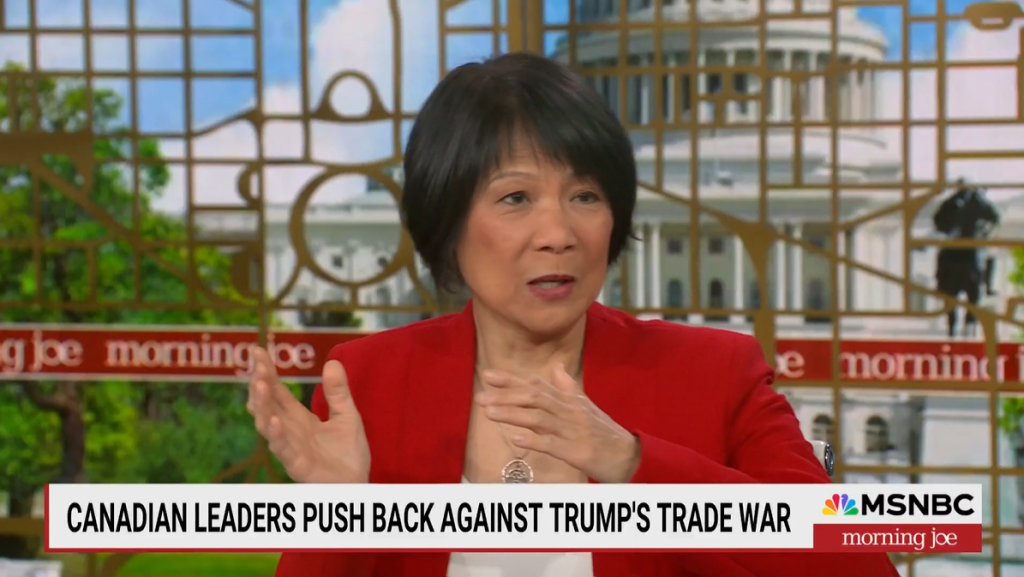‘Drag Kids’ documentary explores theatrical world of pre-teen drag queens
Posted April 29, 2019 2:37 pm.
This article is more than 5 years old.
TORONTO — The dance music is thumping, the audience is giddy and 10-year-old drag artist Queen Lactatia is sashaying up and down a makeshift catwalk in a shimmering metallic dress.
The enthusiastic crowd hoots in approval as the diminutive style phenom weaves between tables at the all-ages brunch event, where the Montreal grade-schooler is followed by three more big-haired pre-teen performers, each in varying degrees of glitter, eyelash extensions and rainbow-hued attire.
The crowd falls silent for a rousing rendition of Lady Gaga’s hit “Shallow” by nine-year-old Laddy Gaga, who belts out the ballad with all the pained inflections of the original.
“I kind of feel like no one was prepared for that!” the show’s drag host, Miss Fluffy Souffle, decked out in a lilac wig and pink tutu.
“Were you like, ‘Oh, this is going to be cute.’ Yeah. And then all of our hearts literally exploded,” the seasoned Toronto performer declares as Laddy, a.k.a. Stephan Hirst of Spain, wobbles off in chunky heels.
Welcome to the world of drag kids, a burgeoning scene of wig-loving, sequin-covered, pint-sized showboats with all the gender-pushing attitude and sass of their adult counterparts.
The over-the-top foursome who recently took over a bookstore/restaurant in Toronto’s gay village are the stars of the Canadian documentary film, “Drag Kids,” making its debut at the Canadian International Documentary Film Festival.
The film’s director, Megan Wennberg, says drag culture has become increasingly mainstream thanks to the reality series “RuPaul’s Drag Race” and YouTube videos that are exposing the culture well beyond adult-only bars and balls.
She says it’s drawing kids who love to dress up and lip sync, and enjoy “being fabulous.” But it also taps into a deeper drive for some to define themselves in unconventional ways, even if it might be controversial.
“It’s an incredible outlet for self-expression, it’s really artistic, it’s really creative, it lets them explore different parts of themselves,” explains Wennberg, whose film is expected to air on CBC-TV after it completes a festival run.
“They’ve all spoken about getting confidence and feeling powerful and just feeling more out there and more open. And also they’re giving a message to others that it’s OK to be different.”
Criticism can be harsh, she adds, noting that each drag kid has faced bullies, most notably Queen Lactatia, a.k.a. Nemis Melancon-Golden.
Arguably the most famous of the bunch, critics have seized on a photo making the rounds online in which Lactatia is seen alongside nearly naked drag star Violet Chachki, a former “Drag Race” winner.
Melancon-Golden and his mother Jessica Melancon dismiss critics’ charges that drag is sexualizing the youngster, and explain away the photo by saying Violet was wearing a pubic wig — called a merkin — for an appearance at RuPaul’s DragCon NYC in 2017.
“She was in costume; he was in costume. It was a two-minute interaction,” says Jessica Melancon, dismissing the notion that nudity is always connected to sex and sexuality.
Wennberg, too, suggests many critics who challenge the avant-garde art form are attacking it unfairly.
“Adults watching it have a real tendency to project onto the kids. And that’s coming from them, that’s not coming from the kids. Whatever people want to project onto them is really about what their experiences maybe are, or their fears are,” she says.
“Anyone who is intolerant of this without watching it and learning about it is just scared and should maybe look at what they’re scared of. There’s nothing scary about a boy in a dress. That’s not scary, it’s great.”
If drag is about pushing boundaries, that means it should also be a welcoming space for kids, adds Bracken Hanke of Vancouver.
The only girl in the group, Hanke says she loves exaggerating female stereotypes as a “hyper Queen” — a female who does drag.
“Drag is super-duper fluid and there’s a lot to it, so I think that it shouldn’t just be limited to a certain group of people,” says the 12-year-old, whose long pink tresses drape down the back of a sheer dress and white body suit.
“Drag is an expression that should be for everyone. And also I like to surprise people.”
In an era when tween girls are regularly bombarded by highly sexual female role models, Hanke’s supportive mom, Dominique, suggests that pushing gender rules through drag can be an antidote.
“Drag has actually been a really healthy way for her to play with that idea without feeling like she has to mimic anybody — she’s kind of poking fun at the ideals, poking fun at those things rather than internalizing them,” says Hanke.
“Which unfortunately you see so much, especially girls this age. (We’re) seeing kids that are the same age as her on Instagram trying to reflect these women that are a lot older instead of having fun with their childhood and still playing dress-up and still having fun and embracing who they are, flaws and all.”
“Drag Kids” screens at Hot Docs on Tuesday and Friday.
Cassandra Szklarski, The Canadian Press








